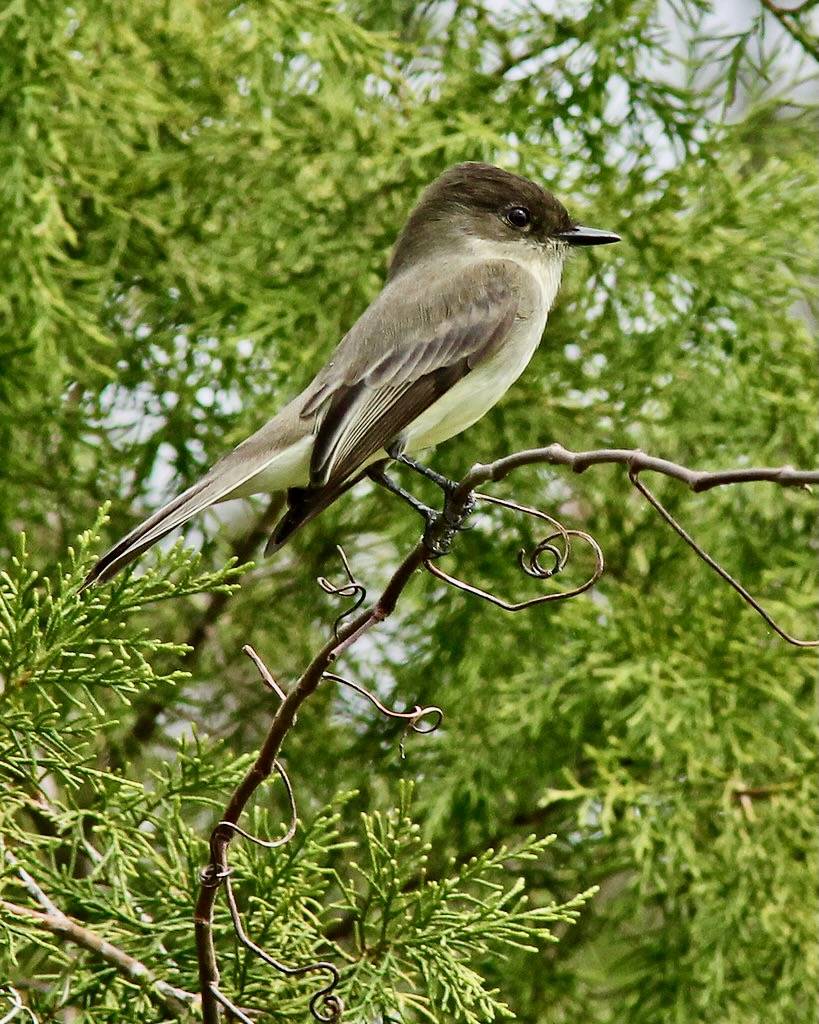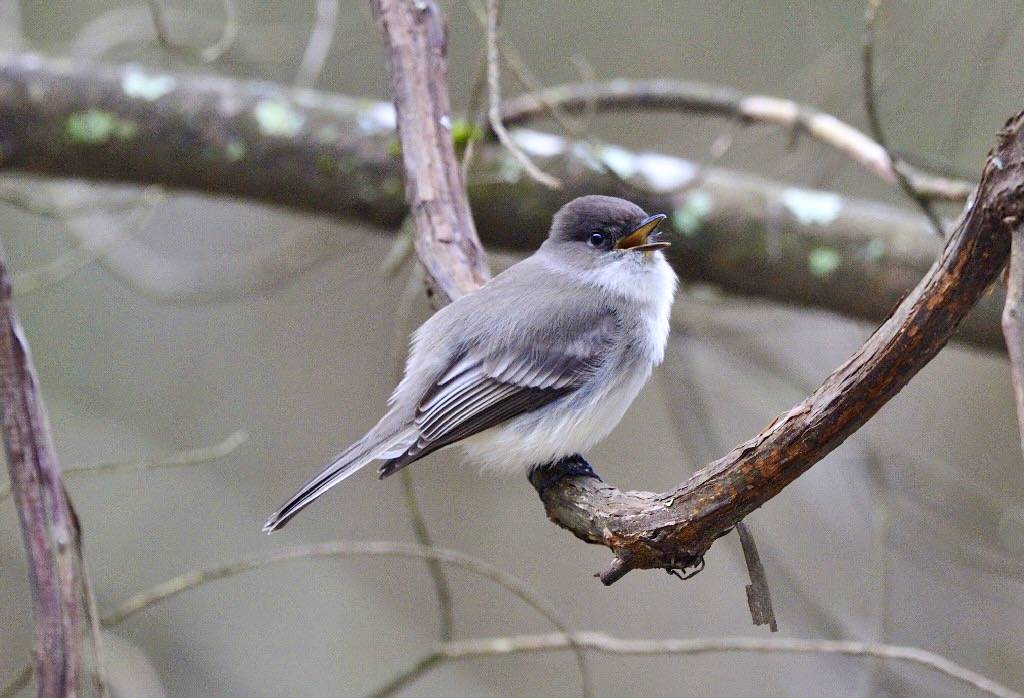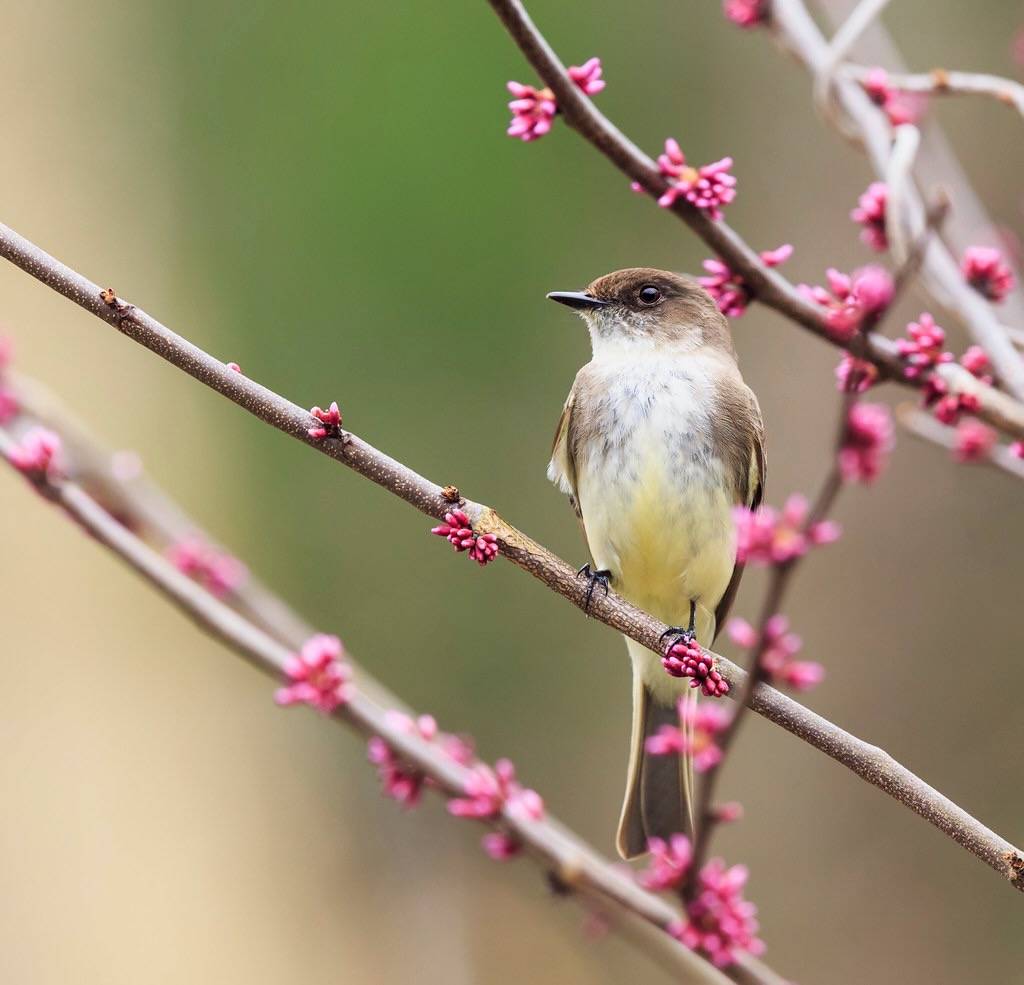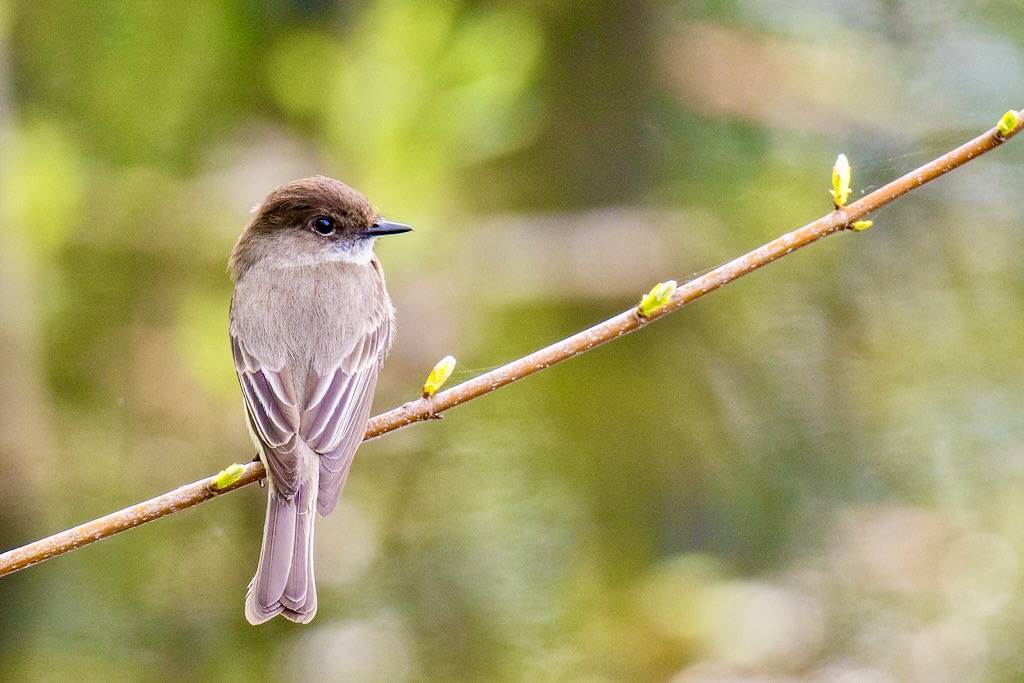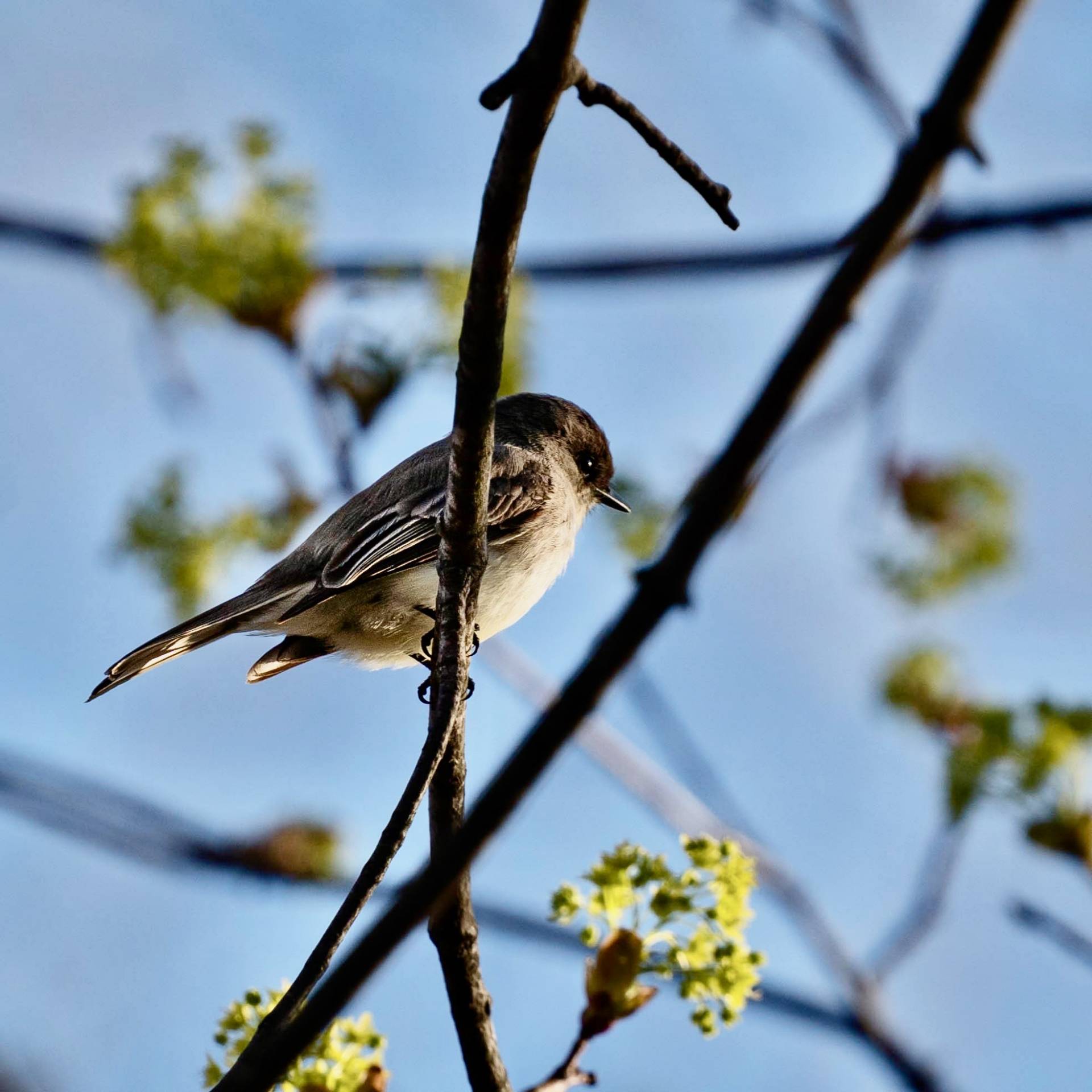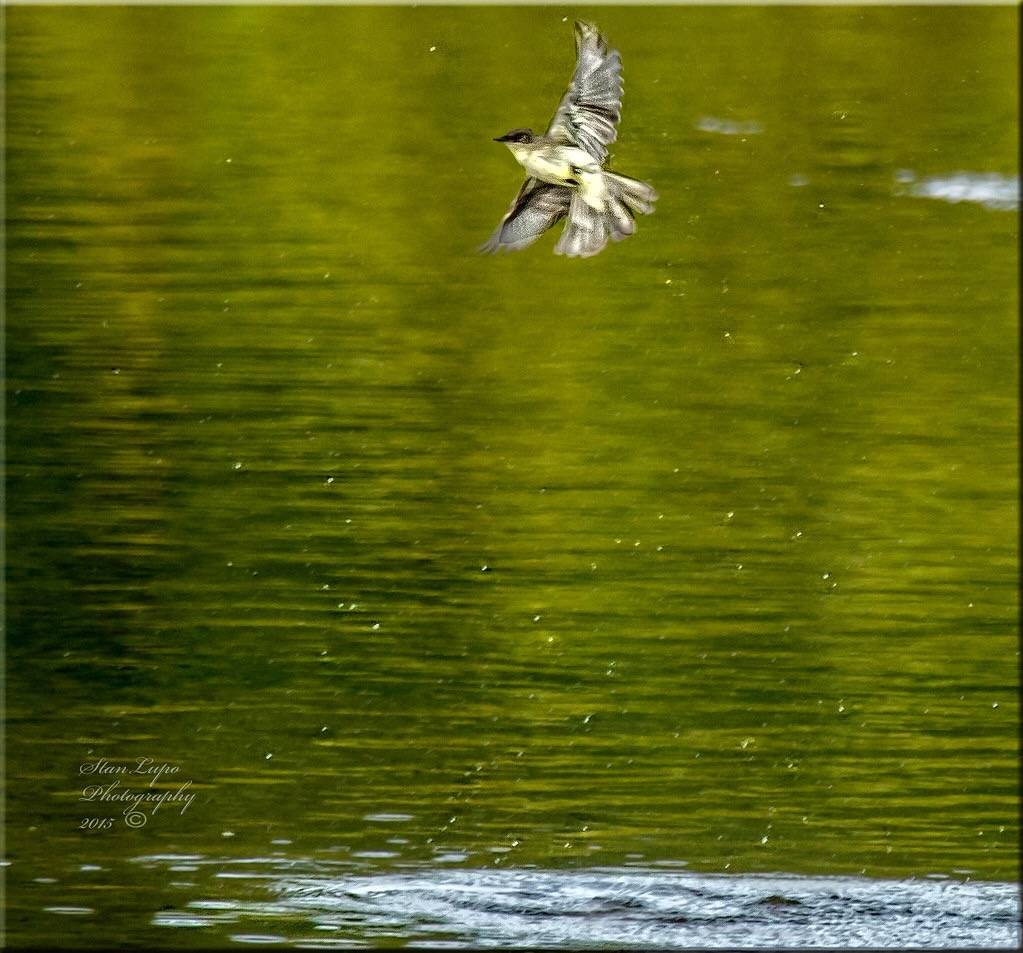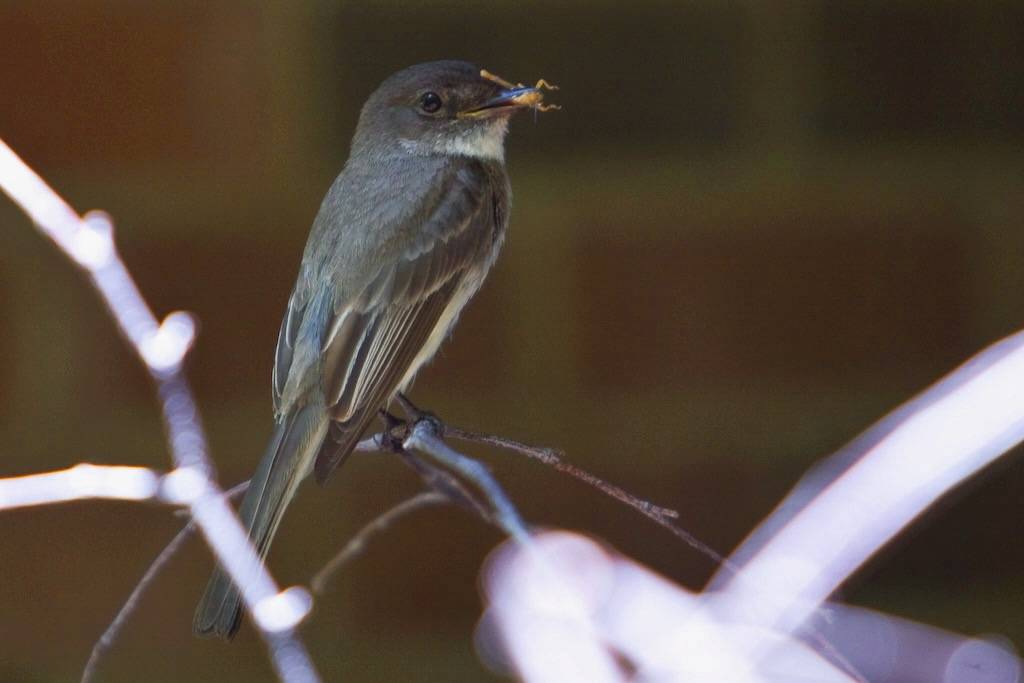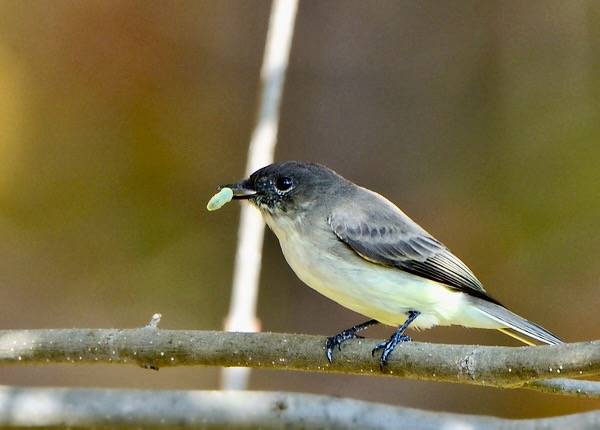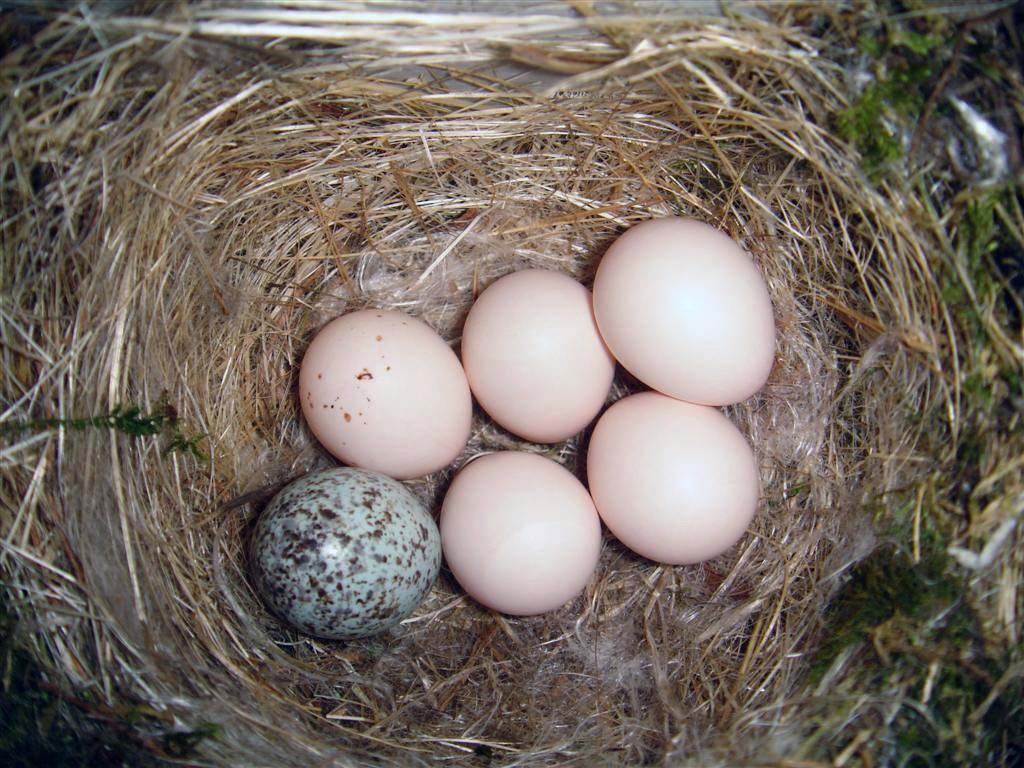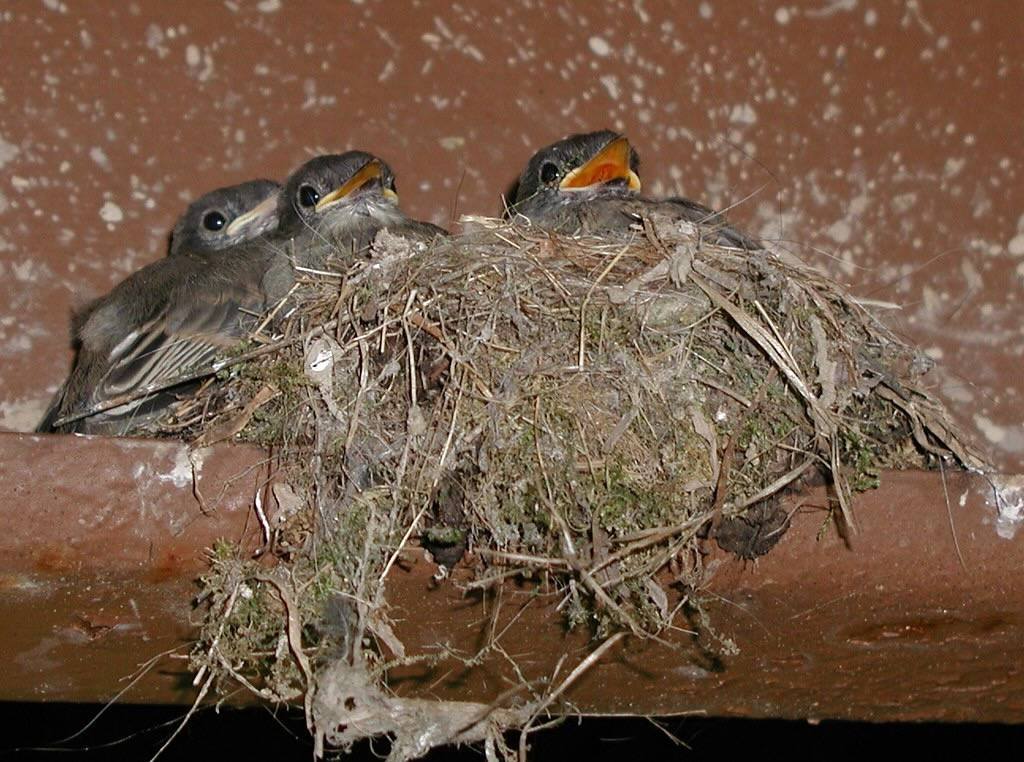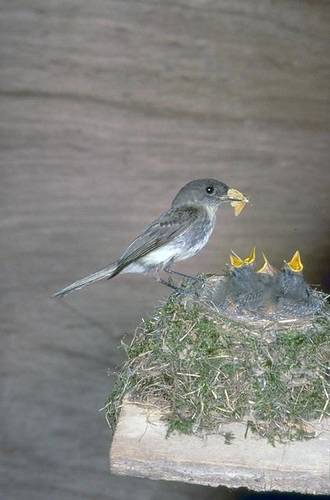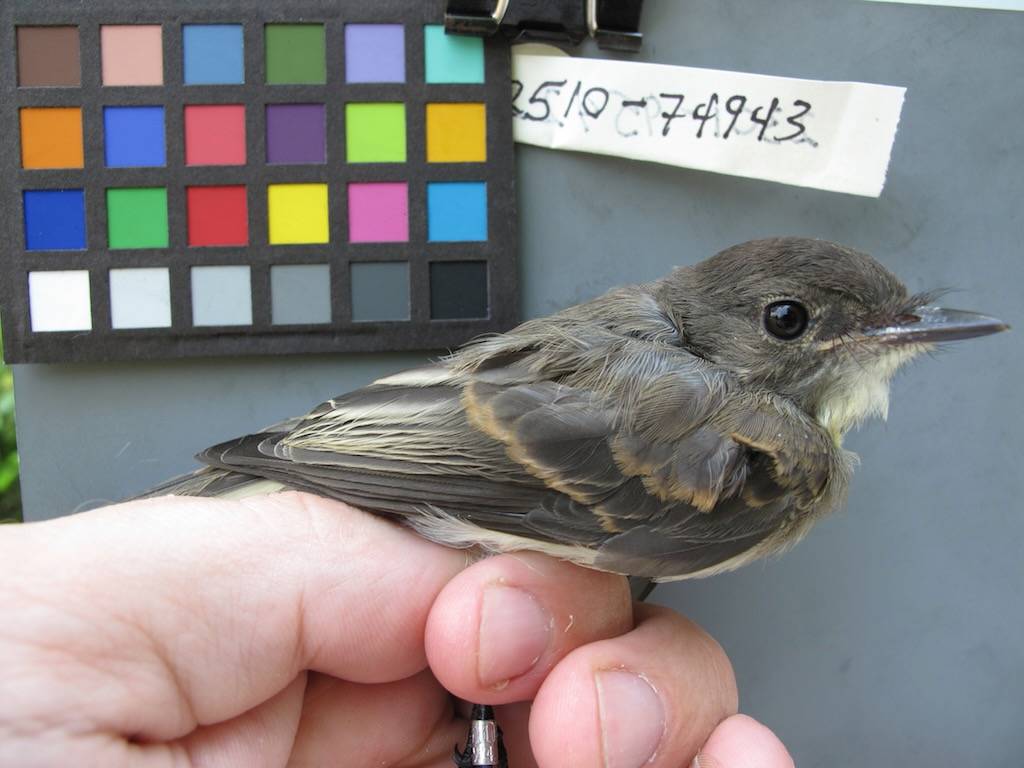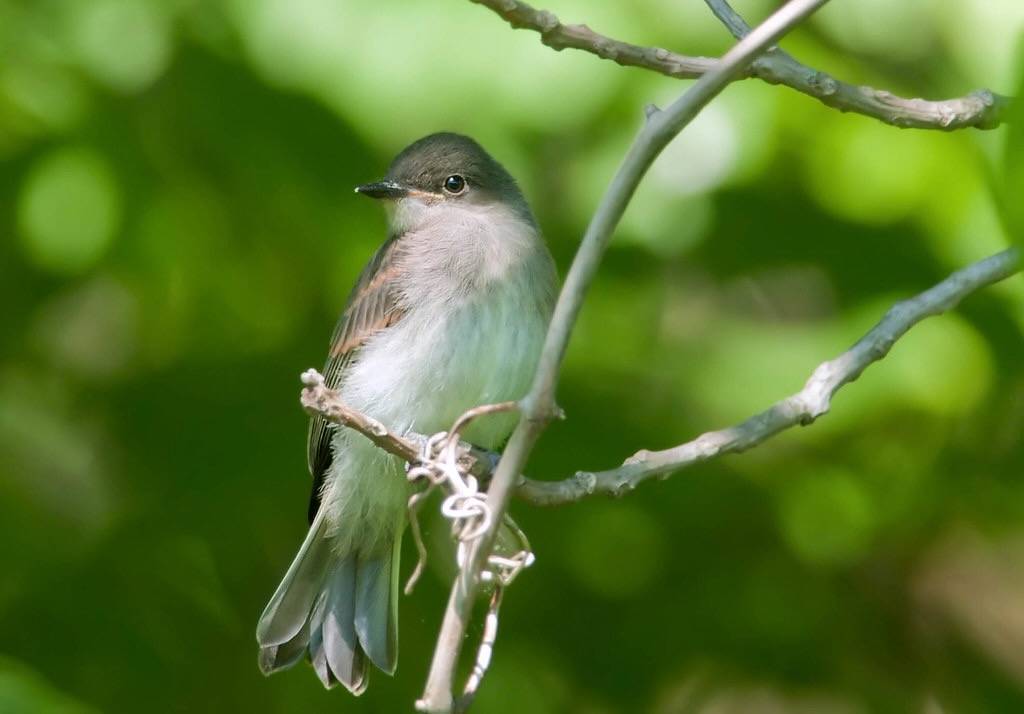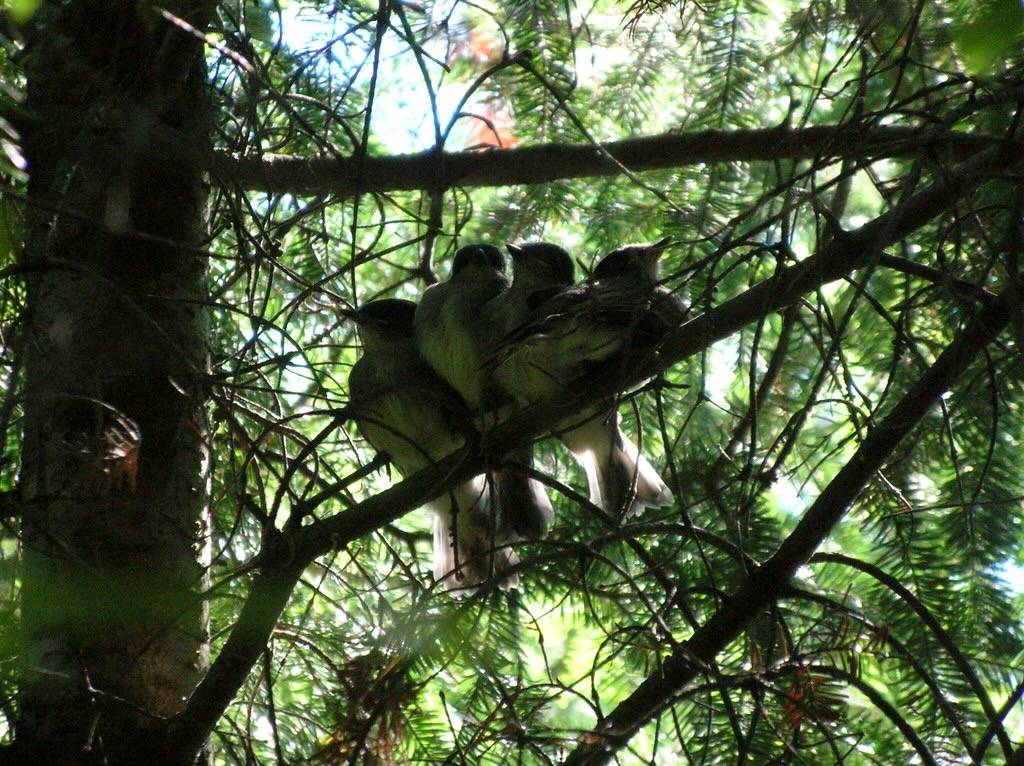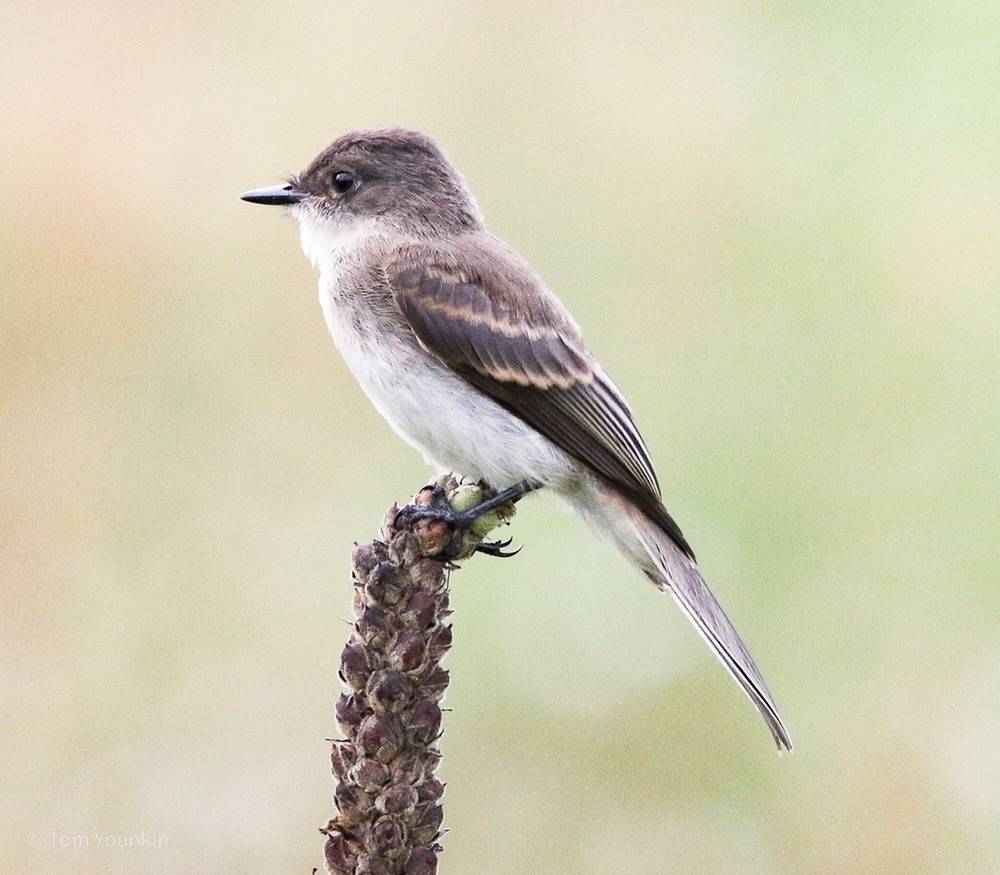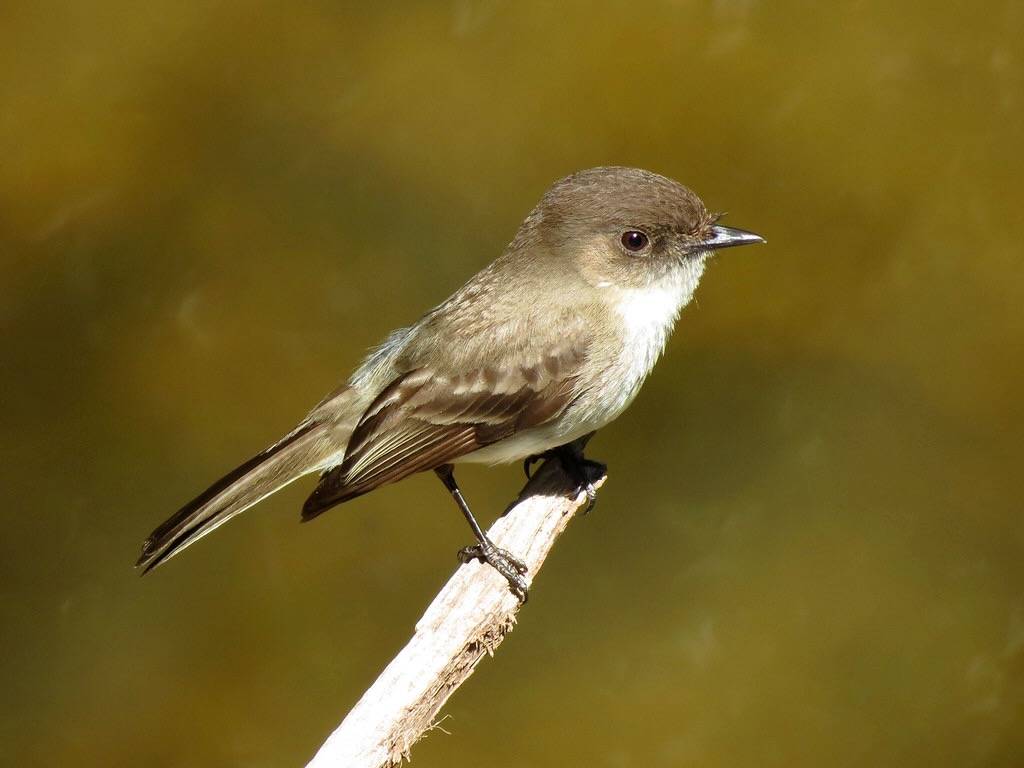Eastern Phoebe
At Salter Grove, Eastern Phoebes are seen during spring or fall migration along the edges of woodland near water, such as near the boat ramp or along the Marsh Trail. It is often the first migrant to visit in the spring and the last to pass through in the fall.
The Eastern Phoebe's head appears somewhat oversized and is slightly darker than the drab grayish-brown upper plumage. Combined with the pale dingy underparts, it is not conspicuous as it sits in waitfor passing prey. This medium-sized flycatcher only calls attention to itself when it sallies forth from its perch to capture ants, flies, grasshoppers, spiders, wasps and wild bee. The slow up-and-down movement of the tail as it waits will also gives away its position in the lower branches of small trees.
The Eastern Phoebe breeds in deciduous forest from northern Canada to southeastern United States. Concentrations of individuals winter in Florida and Texas with some even venturing into northern Mexico.
Its characteristic call "FEE-bee" has given rise to both its common and scientific names. It is not very striking in appearance but has the distinction of being the first bird ever banded. In 1804, John James Audubon, the renowned painter of North American birds, attached silvered-threads to the leg of an Eastern Phoebe to track its arrival from year to year.
Many North American bird species have declined in numbers because of human alteration of the natural landscape. However, the Eastern Phoebe has adapted well to nesting under bridges, and other protected nooks and crannies in human structures such as houses or barns, especially if there is a water body nearby.
For more information:
https://www.allaboutbirds.org/guide/Eastern_Phoebe
https://www.audubon.org/field-guide/bird/eastern-phoebe
http://www.biokids.umich.edu/critters/Sayornis_phoebe/
https://en.wikipedia.org/wiki/Eastern_phoebe
https://blog.nature.org/science/2022/04/25/meet-the-eastern-phoebe-the-flycatcher-that-coexists-with-humans/?utm_source=cgs&utm_medium=archive&utm_campaign=Birds+%26+Birding

